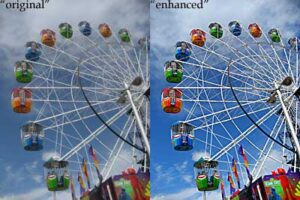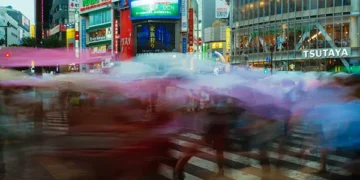Post-processing in Digital Photography
Digital photography has revolutionized the way we take and share pictures. With the advent of digital cameras and smartphones, we can now take photos with ease and share them instantly with our friends and family. However, just taking a picture is not enough to produce a high-quality image. Post-processing plays a crucial role in digital photography to enhance the image and produce the desired result.
Post-processing is the process of editing and manipulating digital images after they have been captured. It involves a variety of techniques, including adjusting brightness and contrast, sharpening, noise reduction, color correction, and retouching. Post-processing can be done using a variety of software tools, including Adobe Photoshop, Lightroom, and GIMP.
The role of post-processing in digital photography cannot be overstated. Here are some of the ways in which post-processing can improve the quality of your images:
Correct Exposure and Colour Balance: One of the primary functions of post-processing is to correct exposure and colour balance. In many cases, photos taken in natural light can appear underexposed or overexposed, leading to a lack of detail or loss of colour. Post-processing can correct these issues by adjusting the exposure and colour balance to make the image appear more natural.

Enhance Sharpness and Detail: Post-processing can also be used to enhance the sharpness and detail of an image. This is particularly useful when photographing landscapes or architectural details. With the right post-processing techniques, you can bring out the texture and detail in the image, making it more engaging and visually appealing.
Remove Noise and Grain: Another benefit of post-processing is that it can help remove noise and grain from digital images. This is particularly important when shooting in low light conditions, where the camera may struggle to capture enough light. Post-processing can help to remove the noise and grain, resulting in a cleaner and more professional-looking image.
Create Artistic Effects: Post-processing can also be used to create artistic effects in digital images. For example, you can add filters to give an image a vintage or film-like look. Or you can use creative cropping and editing techniques to produce a unique and eye-catching image. With post-processing, the possibilities are endless, and you can use your creativity to produce truly unique and memorable images.
Retouching and Image Manipulation: Finally, post-processing can also be used for retouching and image manipulation. This involves removing blemishes or imperfections from a portrait, or removing unwanted objects or people from a landscape photo. Post-processing tools such as the clone stamp or healing brush can be used to retouch and manipulate images to produce the desired result.
However, it is important to note that post-processing should not be used as a crutch to fix poorly taken photos. While post-processing can enhance an image, it cannot fix major technical flaws such as out of focus, motion blur or incorrect exposure. It is important to get the basics right in-camera before relying too heavily on post-processing.

Additionally, it is also important to maintain a balance in post-processing. Over-editing or heavy-handed use of post-processing techniques can lead to an unnatural or over-processed look, which can be visually unappealing. It is important to have a clear idea of the intended outcome of the post-processing and ensure that it enhances the image without detracting from its natural beauty.
Furthermore, it is also crucial to ensure that the post-processing techniques used align with the intended purpose and context of the image. For example, an image intended for a travel brochure may require different post-processing techniques compared to an image intended for an art gallery exhibition. The context and purpose of the image should be considered when determining the appropriate post-processing techniques.
Post-processing can also be a time-consuming process. While there are many automated and batch processing tools available, some images may require individual attention and adjustments. As such, it is important to factor in the time required for post-processing when planning a photoshoot or project.
Finally, it is also important to keep in mind that not all images require post-processing. In some cases, a natural and unedited image may be the best representation of the subject matter. It is important to use post-processing techniques judiciously and selectively to ensure that the final image reflects the intended purpose and context.
Conclusion
In conclusion, post-processing plays an essential role in digital photography. It allows photographers to correct technical flaws, enhance image quality, create artistic effects, and retouch and manipulate images. However, it is important to use post-processing techniques selectively, appropriately and in moderation to avoid an over-processed or unnatural look. With the right techniques and approach, post-processing can take your images to the next level and help you achieve your creative vision.
Post-processing plays a critical role in digital photography. It allows photographers to correct exposure and colour balance, enhance sharpness and detail, remove noise and grain, create artistic effects, and retouch and manipulate images. With the right post-processing techniques, photographers can produce high-quality and visually stunning images that capture the essence of their subject matter. So, the next time you take a photo, don’t forget the power of post-processing to take your images to the next level.

















